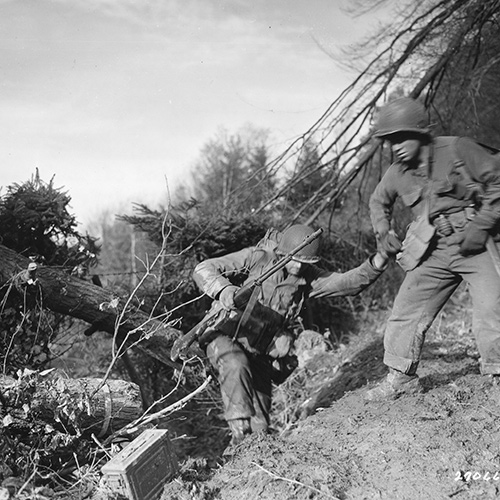
American infantrymen move through Hürtgen Forest
From September to December 1944, American forces clashed with German troops in Hürtgen Forest, a densely wooded region just across the Belgian border. Initially aimed at blocking German reinforcements from moving north against the Allied advance, the battle turned into a grueling 88-day struggle. More than 33,000 American GIs—nearly one in four—became casualties as they battled poor weather, arduous terrain, and a punishing German defense.
While overshadowed by the subsequent Battle of the Bulge, the battle in the Hürtgen Forest remains the single longest battle the American army has ever fought. It has frequently been characterized as a disaster: military historian Carlo D'Esté described it as “the most ineptly fought series of battles of the war in the West.” American troops in the Hürtgen were battered by small arms fire, mortar rounds, and artillery shells, including the dreaded “tree bursts”—shots that exploded in the treetops and sent a shower of deadly wooden splinters on troops below. Thousands succumbed to noncombat injuries as well: trench foot, frostbite, pneumonia, and stress casualties that increased as exhausted soldiers were exposed to the harsh conditions and smothering trauma of the fighting in the Hürtgen.
Christopher Hamner, associate professor of history at George Mason University, draws on veterans’ experiences to explore the nature of the combat in America’s longest battle, with special attention to its strategic place in the broader offensive against the German Siegfried Line and the psychiatric strains experienced by soldiers over nearly three months of fighting.
General Information